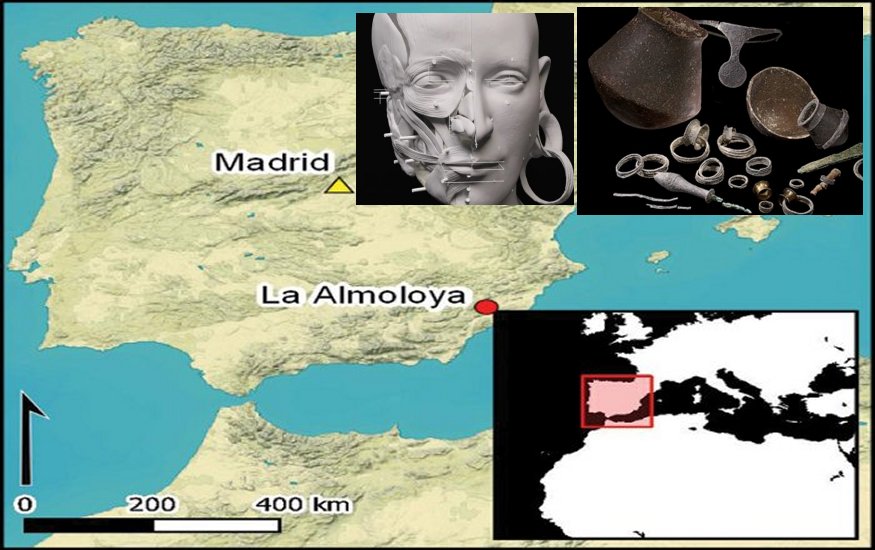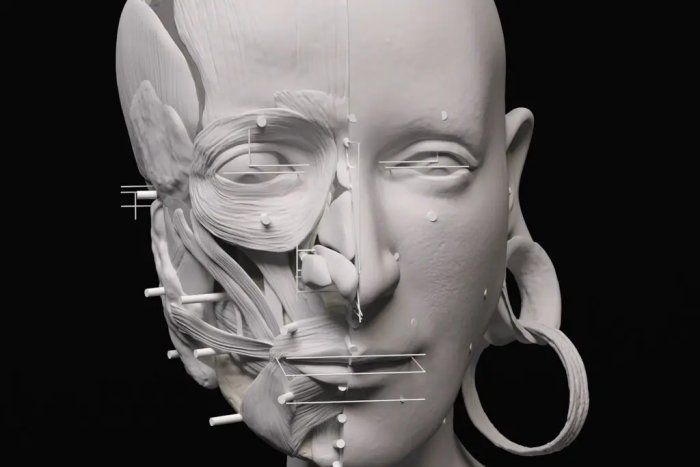Disappearance Of The El Argar Civilization – Why Has No One Lived In The La Almoloya Region Again?
A. Sutherland - AncientPages.com - A few years ago, a unique archaeological wealth of La Almoloya site, located in Pliego, Murcia, was revealed by archaeologists in Spain.
Golden earlobe tunnel-plugs from La Almoloya grave 38 - figure by J.A. Soldevilla, courtesy of the Arqueoecologia Social Mediterrània Research Group, Universitat Autònoma de Barcelona.
The uncovered site was once the cradle of the "El Argar" civilization that lived in the south-eastern part of the Iberian Peninsula during the Bronze Age. Their society flourished between 2,200 and 1,550 BC in the southeast part of what is now Spain.
Around 1550 BC, about 3550 years ago, the Argaric communities ceased to exist. Since then, no one has lived in La Almoloya again.
However, elite women may have ruled El Argar 4,000 years ago before it happened.
The research on the archaeological site of La Almoloya (Pliego, Murcia) was carried out in 2013 and delivered a considerable number of finds. Now, both sites are accessible to the general public.
Some of the objects found in the AY38 burial. Courtesy of the Arqueoecologia Social Mediterrània Research Group, Universitat Autònoma de Barcelona.
La Almoloya is located on a plateau 585 m above sea level in the northern foothills of Sierra Espuña, in the municipal boundaries of Mula and Pliego. The area has an extension of approximately 3,100 m2 and an oval shape, 85 meters long and 35 meters in maximum width. It overlooks a territory of at least 1000 km2. This horizontal visibility gave the place great strategic value and was doubt one of the reasons why a group of people decided to live here about 4,200 years ago.
View of the interior of La Almoloya grave 38 - figure courtesy of the Arqueoecologia Social Mediterrània Research Group, Universitat Autònoma de Barcelona.
They succeeded, and La Almoloya would become one of the most remarkable political centers and perhaps one of the first and the richest and, at the same time, most great societies of the European Bronze Age.
El Argar is considered an early example of a class-based state with divisions in wealth and labor. Known as" El Argar," they were one of the first bronze-using societies in the region and built cities and impressive monuments. The site was discovered in 1944.
Today, once again, we'll look at this great site because, over the last years, scientists have gained much more information about "El Argar.
Background image source: Antiquity
Several items were recovered from the interior of the buildings, including objects made with metals, bones, stones, fabrics, and ceramics, all in exceptional states of conservation.
Of the fifty tombs excavated from under the La Almoloya buildings, one stands out in particular.
It reveals the remains of a man and woman buried with their bodies in a flexed position and accompanied by some thirty objects containing precious metals and semi-precious stones.
"These grave goods have allowed us to grasp this individual's economic and political power and the dominant class to which they belonged," researchers announced.
One of the most outstanding pieces is a silver crown-like diadem that encircled the woman's skull.
The woman's remains were discovered beneath the ruins of the first palace unearthed in Western Europe, dating back to the Bronze Age (about 3,200 -1,200 BC).
The palace-like building was destroyed in a fire shortly after the individuals were buried.
The royal tomb indicates that she and probably other women of the El Argar society were mighty.
Fascinating Grave 38
The funerary goods in Grave 38 and the diadem discovered in La Almoloya is the only one to be preserved in Spain.
Some of the funerary goods from Grave 38 in La Almoloya. The silver diadem was found placed on the head of the woman with the disc-shaped appendix pointing downwards. Image credit: ASOME-UAB
The remains of a man aged 35 to 40 and a woman between 25 to 30 were found in a large ceramic jar located beneath the room's floor. According to genetic analysis, these two individuals died simultaneously or closed together in the mid-17th century BC. They were unrelated but did have a daughter buried near them. The woman had several congenital abnormalities and markings on the ribs that could indicate she had a pulmonary infection at the time of death. Meanwhile, the male also had wear and tear on his bones due to extensive physical activity like horse riding.
Researchers reconstructed the woman's face.
Facial reconstruction in a person's progress buried in Spain 3,700 years ago. Credit: Joana Bruno/ASOME/Autonomous University of Barcelona
Also, other El Argar tombs of the elite women contained prestigious funerary goods. However, especially diadems indicate these women's notable roles played in society.
Interestingly, the discovered diadems were symbolic, emblematic objects made for these women representing the dominant ruling class", according to Cristina Rihuete, one of the researchers involved in their study.
"Each piece is unique, comparable to funerary objects relating to the ruling class of other regions, such as Brittany, Wessex, and Unetice, or in the eastern Mediterranean of the 17th century BCE, contemporary to our Grave 38".
General view of the main buildings discovered in La Almoloya (Pliego, Murcia).
Were The Women Rulers, Or They Only Worn Emblematic Objects Symbolically?
This question has not been answered yet.
For now, it is only confirmed that in this fascinating advanced society, women of the dominant classes were buried with diadems, the men, on the other hand, were buried with a sword and dagger.
Did El Argar's men play an executive role while some women were government members?
Updated on February 10, 2024
Written by A. Sutherland – AncientPages.com Senior Staff Writer
Copyright © AncientPages.com All rights reserved. This material may not be published, broadcast, rewritten or redistributed in whole or part without the express written permission of AncientPages.com
Expand for referencesMore From Ancient Pages
-
 Unraveling the mystery of the Rhynie Man
News | Aug 24, 2015
Unraveling the mystery of the Rhynie Man
News | Aug 24, 2015 -
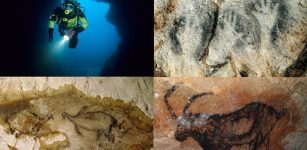 Cosquer Cave And Its Magnificent Underwater Stone Age Paintings Created 27,000 Years Ago
Featured Stories | Apr 20, 2021
Cosquer Cave And Its Magnificent Underwater Stone Age Paintings Created 27,000 Years Ago
Featured Stories | Apr 20, 2021 -
 Treasure Coins Dated To 15th And 16th Century Unearthed In Historical Region Of Slovakia
Archaeology | Apr 17, 2019
Treasure Coins Dated To 15th And 16th Century Unearthed In Historical Region Of Slovakia
Archaeology | Apr 17, 2019 -
 First Peoples’ Early Migration To Australia – Influenced By Evolving Landscapes
Archaeology | May 6, 2024
First Peoples’ Early Migration To Australia – Influenced By Evolving Landscapes
Archaeology | May 6, 2024 -
 Danger Lurking In The Woods – Strange And Unexplained Sightings – Part 2
Featured Stories | Jul 7, 2018
Danger Lurking In The Woods – Strange And Unexplained Sightings – Part 2
Featured Stories | Jul 7, 2018 -
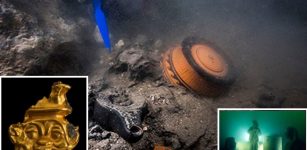 Ancient Underwater City Of Heracleion Reveals More Archaeological Treasures
Archaeology | Jul 21, 2021
Ancient Underwater City Of Heracleion Reveals More Archaeological Treasures
Archaeology | Jul 21, 2021 -
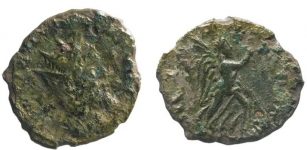 Extremely Rare Ancient Coin Of Short-Lived Roman Ruler Laelianus Discovered
Archaeology | Jun 25, 2019
Extremely Rare Ancient Coin Of Short-Lived Roman Ruler Laelianus Discovered
Archaeology | Jun 25, 2019 -
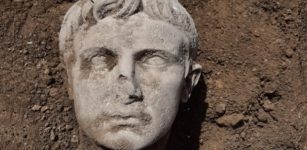 Marble Head Of Roman Emperor Augustus Unearthed In Isernia, Italy
Archaeology | May 7, 2021
Marble Head Of Roman Emperor Augustus Unearthed In Isernia, Italy
Archaeology | May 7, 2021 -
 Unexplained Behavior In People Found After Being Lost In National Parks – Strange Encounters With Dangerous Humanoids And The Little People
Featured Stories | Oct 27, 2024
Unexplained Behavior In People Found After Being Lost In National Parks – Strange Encounters With Dangerous Humanoids And The Little People
Featured Stories | Oct 27, 2024 -
 1,800-Year-Old Statue Of A Water Nymph Found Underground In The Ancient City Of Amastris
Archaeology | Sep 8, 2023
1,800-Year-Old Statue Of A Water Nymph Found Underground In The Ancient City Of Amastris
Archaeology | Sep 8, 2023 -
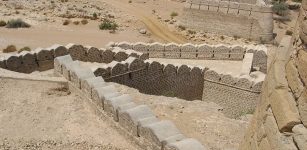 Great Wall Of Gorgan: One Of The World’s Most Sophisticated Frontier Walls Ever Built Is Now Examined
Archaeology | Dec 26, 2017
Great Wall Of Gorgan: One Of The World’s Most Sophisticated Frontier Walls Ever Built Is Now Examined
Archaeology | Dec 26, 2017 -
 Thousand-Year-Old Farming Techniques And Irrigation Systems Can Be Used To Mitigate Climate Change
Archaeology | Mar 7, 2018
Thousand-Year-Old Farming Techniques And Irrigation Systems Can Be Used To Mitigate Climate Change
Archaeology | Mar 7, 2018 -
 Pytheas’s Voyage To The Arctic In 325 B.C. And Account Of Thule, The Strange Land Beyond
Featured Stories | May 29, 2021
Pytheas’s Voyage To The Arctic In 325 B.C. And Account Of Thule, The Strange Land Beyond
Featured Stories | May 29, 2021 -
 Mysterious Kolob – Does The Sacred Star Of The Mormons Exist?
Featured Stories | Feb 4, 2019
Mysterious Kolob – Does The Sacred Star Of The Mormons Exist?
Featured Stories | Feb 4, 2019 -
 Long Mysterious Tunnel Discovered Inside The Khufu Pyramid
Archaeology | Mar 2, 2023
Long Mysterious Tunnel Discovered Inside The Khufu Pyramid
Archaeology | Mar 2, 2023 -
 Ancient Romans Invented The First Bound Book
Ancient History Facts | Sep 25, 2017
Ancient Romans Invented The First Bound Book
Ancient History Facts | Sep 25, 2017 -
 A Tooth That Rewrites History? The Discovery Challenging What We Knew About Neanderthals
DNA | Oct 23, 2023
A Tooth That Rewrites History? The Discovery Challenging What We Knew About Neanderthals
DNA | Oct 23, 2023 -
 World’s Oldest Recorded Solar Eclipse Re-Writes History Of Egyptian Pharaohs
Archaeology | Oct 30, 2017
World’s Oldest Recorded Solar Eclipse Re-Writes History Of Egyptian Pharaohs
Archaeology | Oct 30, 2017 -
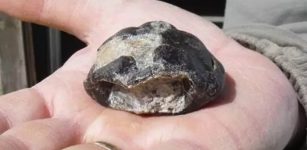 First Discovery Of A 127-Million-Year-Old Side-Necked Turtle Fossil In UK
Fossils | Jun 13, 2023
First Discovery Of A 127-Million-Year-Old Side-Necked Turtle Fossil In UK
Fossils | Jun 13, 2023 -
 On This Day In History: American General Benedict Arnold Commits Treason – On Sep 21, 1780
News | Sep 21, 2015
On This Day In History: American General Benedict Arnold Commits Treason – On Sep 21, 1780
News | Sep 21, 2015




